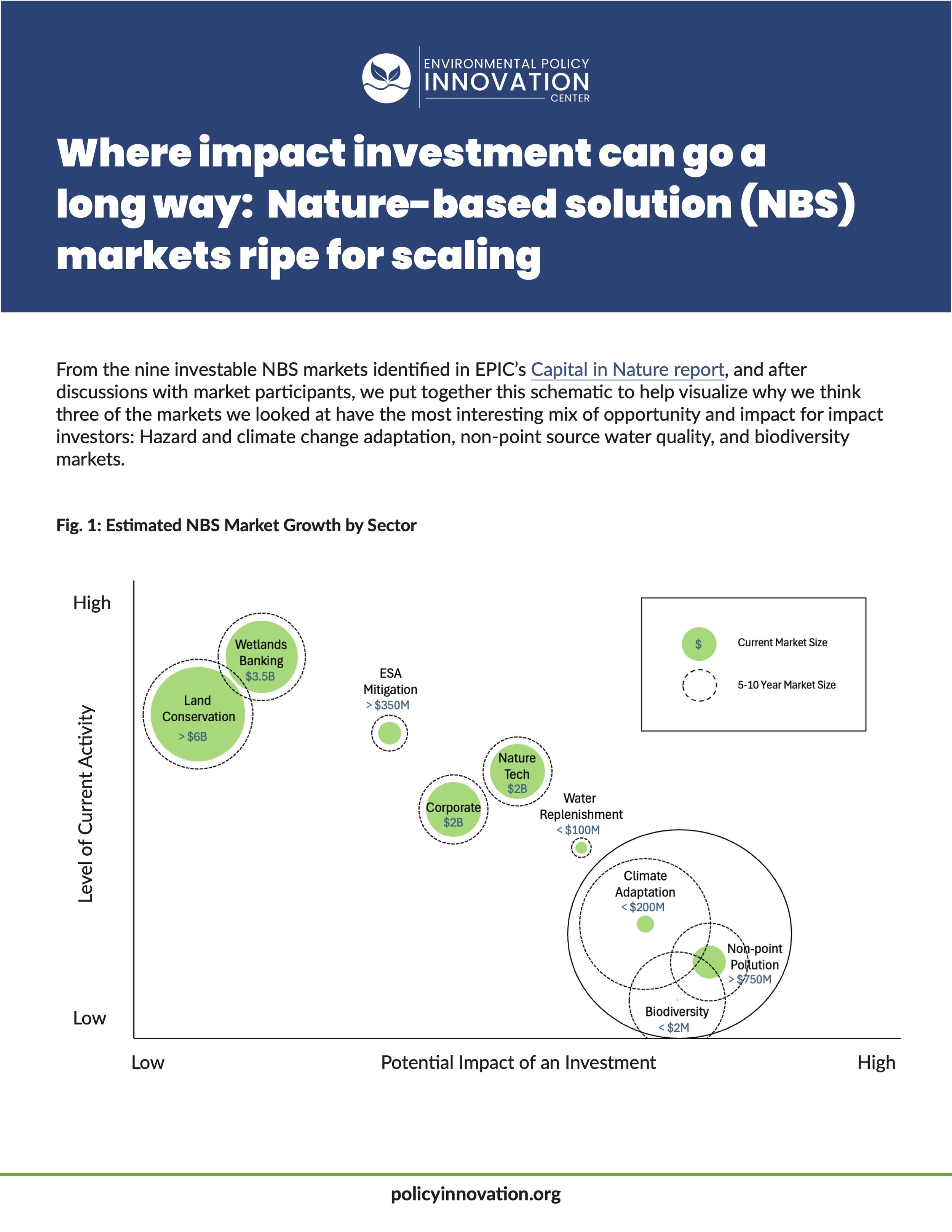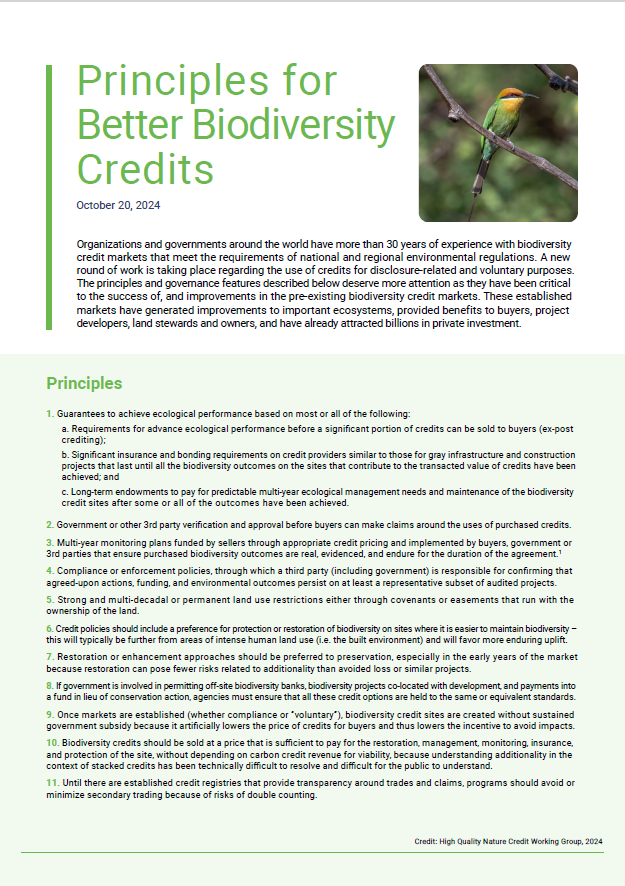States are leading the way towards refocusing conservation onto environmental outcomes. But what does it mean to pay for an outcome?
An environmental outcome is a single, quantifiable, and certified unit of improvement to the environment, such as a pound of nitrogen prevented from entering waterways or a ton of carbon sequestered in soil. By focusing conservation programs on the end result instead of the process to get there, governments can cut administrative waste and align incentives for companies, nonprofits, and farmers to create innovations that maximize each dollar spent.
EPIC has educated decision-makers and provided technical assistance to the development of water quality outcomes purchasing programs in the following states:
-
The 2017 Clean Water Commerce Act was originally designed to fund the most cost-effectiveness upgrades to wastewater treatment plants, but in 2021 the concept was dramatically improved to buy water quality improvement outcomes from other kinds of green infrastructure, including on agricultural lands. Now, this groundbreaking program has been authorized through 2030 to purchase $20 million a year of the most cost-effective nitrogen reduction outcomes. By focusing on outcomes, this program can bypass the typical bottleneck of NRCS technical assistance that has led to frustratingly long wait times for farmers who want to conduct conservation. It will allow the state to scale proven solutions for preventing nitrogen from entering streams, rivers, and the Chesapeake Bay. Maryland Department of the Environment’s application period closed on September 9, 2022, and they received applications for almost five times the amount of money available, most at a significantly lower cost than traditional cost-share or reimbursement contracting.
-
Pennsylvania has long struggled to reconcile its impact on the Chesapeake Bay with its lack of direct access to the estuary. 2022 saw a breakthrough in this paradigm with passage of the $225 million Clean Streams Fund, funded by the American Rescue Plan. Within this Fund, $22.5 million is allocated to the Clean Water Procurement Program, which will buy nitrogen, phosphorus, and sediment reductions much like Maryland’s Clean Water Commerce Act. These quantified units of environmental improvement will be paid for after they are produced, as goods rather than services.This contracting structure will cut paperwork for providers and increase competition, thus driving down costs and allowing for greater restoration benefits. The administering agency, PENNVEST, released a draft application and a scoring system that prioritizes applications based on their cost per pound, inclusion of small farms, and environmental co-benefits in February 2023 and has a request for proposals open until September 1, 2023.
-
Pennsylvania is so crucial to the Chesapeake watershed because of the Susquehanna River, which provides 55% of the fresh water entering the Bay and whose watershed reaches all the way into New York state. Much of the sediment (and the nutrients that come with it) flowing through the Susquehanna was expected to be trapped behind the Conowingo Dam, but as those predictions have been updated, the states now need to find another way to prevent 1.675 million pounds of nitrogen from flowing into the northern reaches of the Chesapeake Bay. To address this, Maryland–on January 4th–approved a $25 million transfer to the multi-state Susquehanna River Basin Commission to buy nitrogen reduction outcomes using Pay for Success contracts in either state’s portion of the watershed. To our knowledge, this represents the first time Maryland will spend state money on projects in another state in the watershed. This collaboration is only enabled because of the clear, quantified environmental outcomes provided by Pay for Success contracts.
Interested in making your state’s conservation funding have a bigger impact by purchasing environmental outcomes?
Contact Harry at hhuntley@policyinnovation.org































